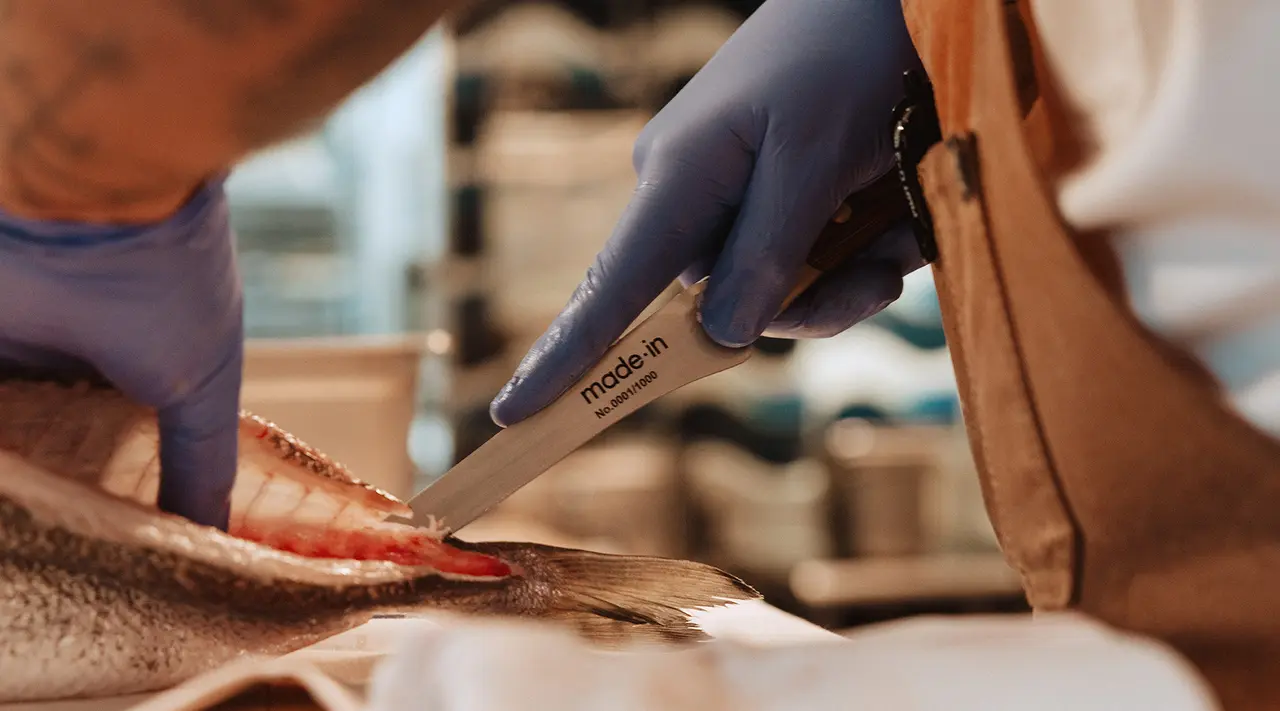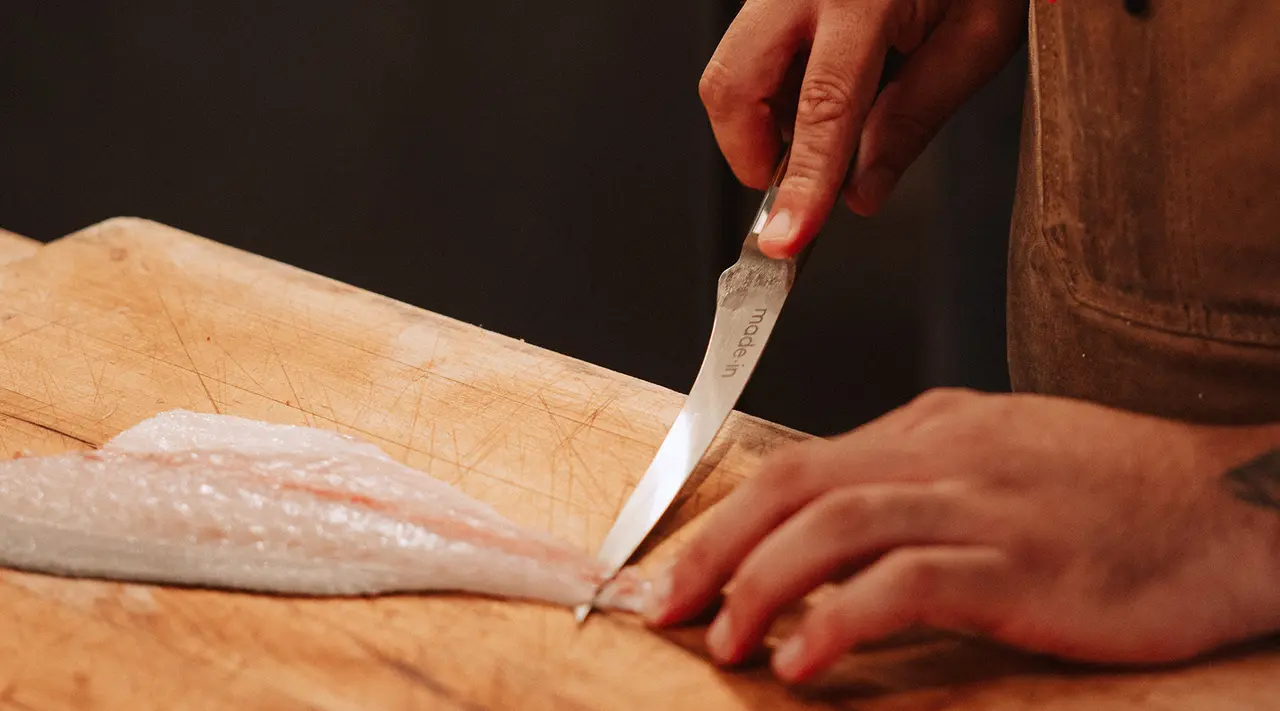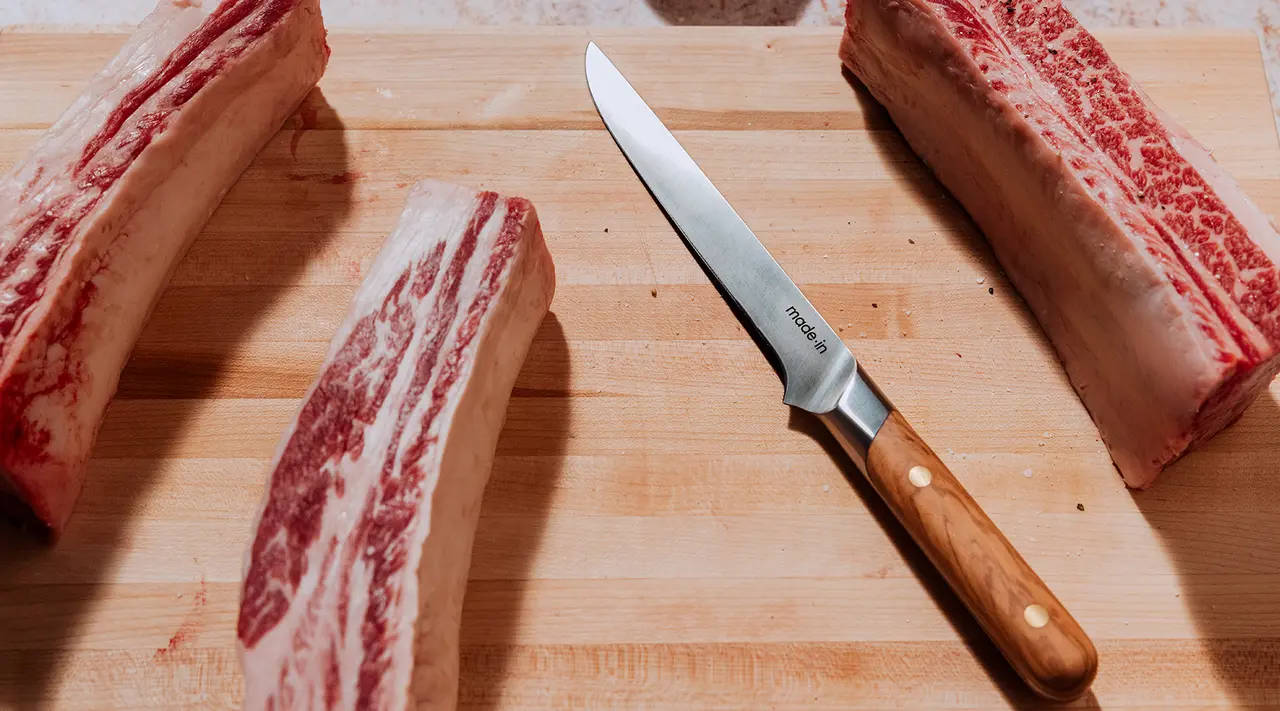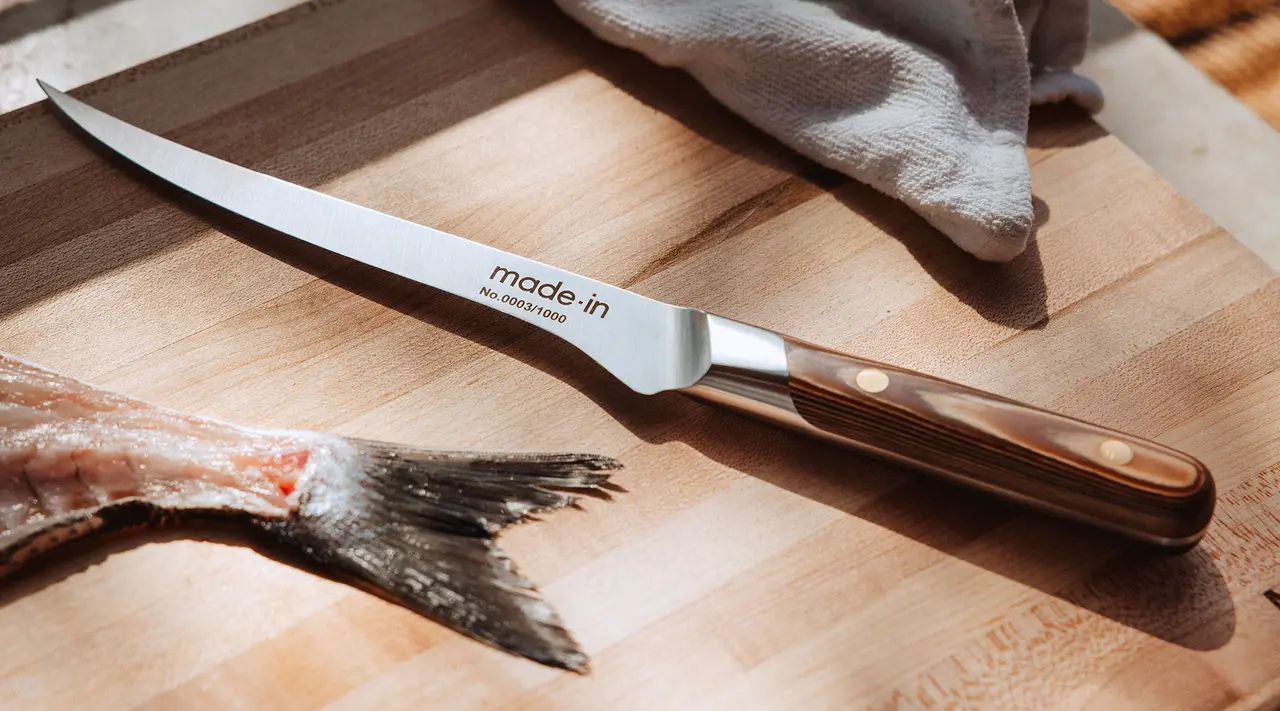If you're not already familiar with them, it can be easy to mix up the fillet and boning knife. Both feature long, skinny, relatively flexible blades with a narrow tip, and are often used interchangeably.
And while you can often swap them out for one another, it’s still important to understand the differences between these two styles. Below, you’ll find a thorough breakdown of boning knives vs. fillet knives, along with how to know when it’s time to reach for one over the other.
What Is Each Knife Used for?

Boning and fillet knives have pretty similar purposes: both are used to get rid of bones, skin, and unwanted fat on proteins, leaving you with precise cuts of your favorite fish or meat. Of course, there are a couple of minor differences to keep in mind.
When to Use a Boning Knife
While a boning knife can be just as flexible as a fillet knife depending on the manufacturer and blade strength, they will often be a bit more rigid to help slice through tough tendons and joints, debone poultry, and break larger cuts down into steaks and chops.
The pointed tip offers plenty of dexterity, allowing the blade to slip nimbly between flesh and bone or skin, while the length allows for clean, even cuts.
When to Use a Fillet Knife
Unsurprisingly, a fillet knife excels when it comes to breaking down whole fish: the blade’s flexibility, pointed tip, and long, skinny shape allows you to maneuver around larger bones with minimal friction, and without leaving behind perfectly good meat. You can also use a fillet knife for skinning and removing the scales of fish, and even for slicing raw fish for sashimi.
Key Differences Between Boning and Fillet Knives

While these two blades can often be used interchangeably—especially if you aren’t regularly breaking down a whole fish or cutting your own chops—there are a few key differences between these knives.
Blade Shape
Because filleting (and working with fish in general) requires delicacy and precision, you’ll need a knife that allots a bit more control than an unyielding chef knife. This is where a longer, skinnier fillet knife comes in.
A boning knife, on the other hand, should have enough heft to slice through muscle and tendon, but still thin and flexible enough for detailed butchery.
Blade Flexibility
As we mentioned earlier, the stiffness of your blade varies depending on the make and manufacturer—you can find boning knives with bendier blades, as well as more rigid fillet knives.
A boning knife can stand in for a fillet knife (and vice versa) in many cases, particularly when breaking down whole fish, or cutting a loin of tuna or swordfish into steaks. If you’re only going to buy one knife, however, try to choose one that’s flexible enough to deal with more delicate varieties of fish, like sole or tilapia, but not so flexible that it feels unwieldy.
Blade Length
Fillet knives are usually longer than boning knives, which is a major advantage when it comes to filleting and skinning whole fish as it allows you to make smooth, even strokes. You can also use a fillet knife for jobs like deboning large cuts of meat and even breaking down whole chickens.
On the other hand, a longer knife won’t be as well suited to more minute, fiddly tasks, like deboning chicken thighs,, meaning you may want to go for a smaller, more precise boning knife in these cases.
How to Choose Between Boning and Fillet Knives

If you’re torn on whether to add a boning or fillet knife to your collection, It all ultimately depends on the kind of protein you’re preparing.
Type of Meat or Fish
As we’ve touched on, boning and fillet knives can often be used interchangeably: both excel at curving around bones and separating meat from skin and fat.
If you’re only buying one of these, however, you’ll want to think about the types of proteins you’ll be working with most often.
- If you’re mostly preparing whole fish, a fillet knife is going to offer the length and flexibility you need to debone fish and slice it into steaks or fillets.
- If you're preparing more meat than fish, the thicker, shorter boning knife is a better option.
Personal Preference
Some chefs simply prefer a longer, more flexible knife to a shorter, stiffer one, regardless of its intended function. Just like when choosing between a chef knife and santoku, we recommend going for the knife that you feel most comfortable using.
Budget and Quality
Like chef knives, both boning and fillet knives vary significantly in terms of quality. All of our French-made knives are fully forged and full tang, which means they’ll hold an edge longer and feel more balanced than partial tang and/or stamped knives. A cheaper knife may still do a decent job, but you’ll likely have to sharpen it more often—and perhaps even replace it in a few years.
Ready to Shop?
While we can’t tell you what kind of knife to buy, we can tell you that, ultimately, the best one for you depends on your cooking style, protein preferences, and which knife feels most comfortable to use. Our Fillet Knife is versatile enough to handle almost any meat or fish you need to prepare, and durable enough to last a lifetime. Don't miss adding this special blade to your lineup.































